A Look Inside the Former ‘New York State Lunatic Asylum at Utica’
by Chris Clemens
In the early 1840’s Dorothea Dix was just beginning her lobbying efforts in Massachusetts to call for better treatment of individuals experiencing mental health concerns, particularly those living in institutions. At the same time that she was conducting visits to county based Almshouses, the State of New York was beginning to realize that the treatment provided in its own Poor Houses was deplorable. Dix published her expose entitled Memorial to the state of Massachusetts where she reported “Insane persons confined within…cages, stalls, pens! Chained, naked, beaten with rods, and lashed into obedience” but New York was already beginning to look at state run institutions as a progressive option for providing care. In fact, it had already broken ground on building one; the ‘New York State Lunatic Asylum at Utica’.
Erected in 1843, it was the first of its kind not only in the state, but was also a forerunner in our nation’s effort at providing mental health care within an institutional setting. The Asylum at Utica predated even the Kirkbride Plan, which just a few years later would become the nationwide standard for state run treatment centers. While the treatment methods at Utica may seem inhumane today, for the time period they were thought to be incredibly progressive and based steadfastly on providing individualized care and support. Many seem to believe that treatment centers in the 19th century were evil and barbaric, almost as if they were intended to be that way, but records and journals from the time period indicate that employees at Utica (who lived right on the wards) truly cared for patients and loved their jobs. Our methods today may seem more advanced and compassionate but what was happening inside the walls of the Asylum at Utica were the advanced and compassionate methods of the 1800’s.
Though all of the original New York state-run asylums have now either closed entirely or have been in some way repurposed, a few do occasionally open for tours. In the summer of 2014 the Asylum in Utica announced an opportunity for public tours and such an overwhelming attendance showed that hundreds had to be turned away. This year, they quietly announced a few tours available throughout May and June. Since I’ve now been to the Willard Asylum for the Insane in Ovid and the Richardson-Olmstead Complex in Buffalo, I hopped at the opportunity to get a peek into another part of New York State’s mental health history.
The affectionately nicknamed ‘Old Main’ building on the campus is the first and original of multiple buildings though most of the buildings that followed have since been razed. Amazingly, Utica residents helped raise money and donated personal funds to help offset the costs of building. The 130 acre property was purchased for $16,300 with the State of New York kicking in only $10,000–the rest was raised by the local Uticans. Just think about that for a second. Imagine today if the state wanted to build an institution in your neighborhood to support those less fortunate. Would it be welcomed at all? Would it be so welcomed that your neighbors would actually pitch in their own money to bring it??
Part of the cost is immediately obvious upon approaching the facade of the building, it’s enormous! Considered to be one the finest examples of Greek Revival architecture in the country, the front portico boasts six limestone columns each eight feet in diameter and standing 48 feet tall.
No European public edifice has a grander Greek Doric portico than that which dominates the tremendous four story front block…” – Henry Russell Hitchcock, famed architectural historian
Architect William Clarke originally designed the campus to include four identical buildings, but after completing the first ‘Old Main’ building and the three foundations for the others, impending costs cancelled the plans and Old Main stood alone for the first number of years it was operational. Three floors (and a basement) with men and women divided on each wing into mostly single occupancy rooms allowed for a total of about 420 residents when the Asylum at Utica first opened. Journal documents from the first year of operations indicate that there were a total of only 41 employees to care for a facility that always operated at full capacity.
Dr. Arariah Brigham led the facility as the asylum’s first director and brought his progressive tactics and treatment models to the campus. Leading the way for the rest of the country with his ideas, he began to publish them with an in-house printing shop under the title of the American Journal of Insanity. Years later the journal would be purchased by the American Medico-Psychological Association and evolved into what is still relied heavily upon today by mental health treatment professionals, the American Psychiatric Journal. Brigham believed that professionals weren’t the only ones who should be publishing though. He encouraged the patients at the asylum to use the printing press to publish The Opal, a ten-volume journal entirely created by Utica patients. Featuring prose, articles, poetry, personal accounts and even political commentary, the patient-run publication offered an unprecedented view into the minds of patients. Possibly even more importantly, it gave those same individuals a creative outlet and opportunity for their voices to feel validated.
Patients with concerns ranging from “bumps on the head” to “sadness because of the death of a loved one” to “religious excitement” (remember, there was a TON of this in Central New York in the mid-1800’s) would be receiving the same care as someone who today would be diagnosed with significant mental health challenges like schizophrenia or who had committed violent crimes due to mental health challenges. Furthermore, illnesses like alcoholism and people with intellectual disabilities would all be side by side receiving the same treatments. As time went on, disorders that were thought to be more acute would continue to be treated in Utica while more chronic patients would be transferred to the nearby Willard Asylum for the Chronic Insane in Ovid. That being said, there were plenty of cases where someone may require calming techniques in the event that they wouldn’t be able to maintain a composure suited for the safety of themselves and others. With an average employee to patient ratio of 1:10, providing restraint that served its purpose of both calming technique and safety for all became paramount.
Possibly one of the most (in)famous tactics set forth at Utica today is a cringe-worthy tale. The Utica Crib wasn’t invented at Utica, but Brigham was one of the first in the nation to use it, as a result bringing it to the forefront of modern psychiatric care which led to it being named after the New York facility. Invented in 1845 by Dr. M.H. Aubanel of the Marseilles Lunatic Asylum in France, the Utica Crib has been described as a ‘covered bed’, a bit of a glossy euphemism. Just barely large enough for an average sized adult, the 18 inch deep, 6 foot long and 3 foot wide wooden cage intended to provide a respite to anyone experiencing an excitement thought to be dangerous. The third Medical Superintendent at Utica un-did the work of his predecessor and did away with what he felt to be an inhumane treatment. On January 18, 1887, Dr. George Alder Blumer proudly announced that there wasn’t a single Utica Crib left on campus.
The facility’s evolution has seen numerous name changes and developments since 1843. Buildings have gone up and buildings have come down. Treatment models have been introduced and retired. Thousands of patients have checked in, and many have checked out after having successfully worked through treatments and re-establishing healthy patterns. Today, the campus is known as the Mohawk Valley Psychiatric Center and though ‘Old Main’ is now only used for records storage for the state, the remaining buildings around campus continue to provide care with both inpatient and outpatient support. More recently, the staff at Mohawk Psychiatric felt it would be a worthy service to open the doors of ‘Old Main’ and provide a peek in to the history of our state’s treatment of those who were not able to care for themselves.
Many, many thanks to the staff at Mohawk Valley Psychiatric Center for providing such a fantastic opportunity to the public by providing these free tours! Staff’s personal accounts of modern-day care accompanied by stories of yesteryear were really intriguing to hear. Much like the original staff at Utica, it’s clear that the folks carrying forward today love what they do and are happy to do it.
Sources and Additional Reading
1880 The Utica Crib on The Inmates of Willard
Utica State Hospital on NYSAsylum
Utica Psychiatric Center on Wikipedia
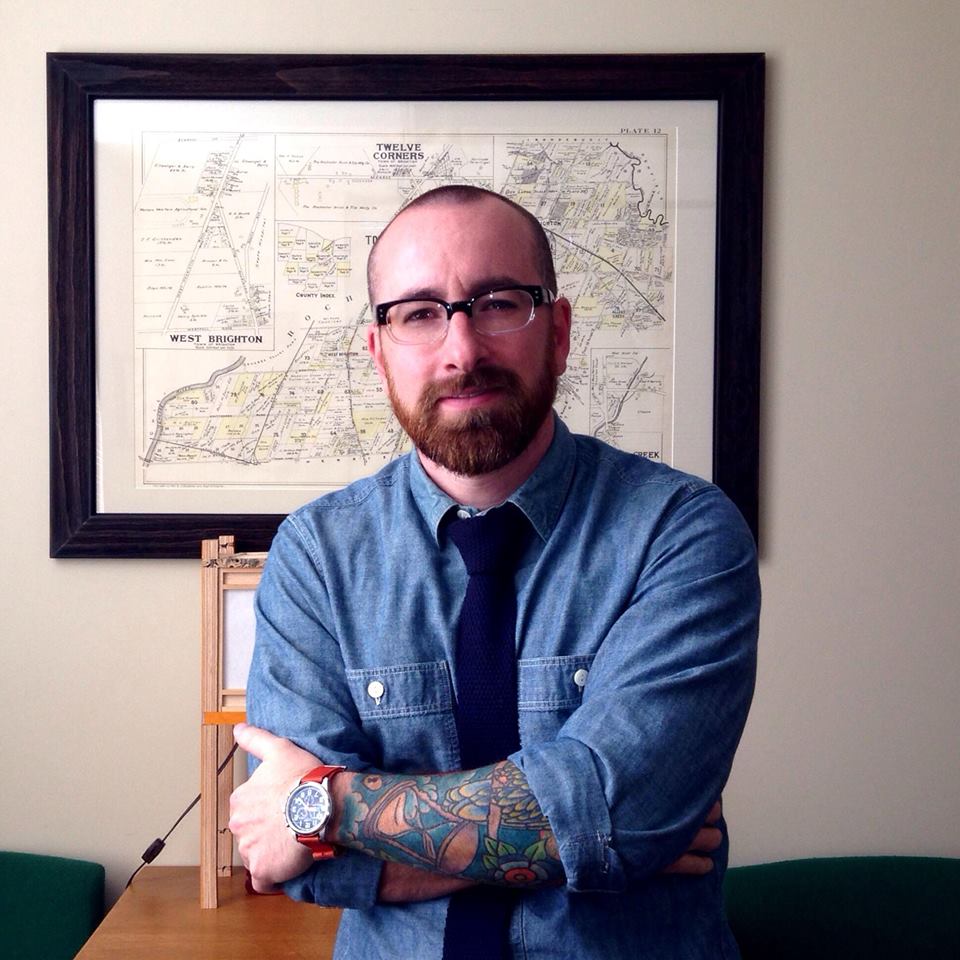
Chris Clemens is the Founder/Publisher of Exploring Upstate. From his hometown in Rochester, he spends as much time as possible connecting with the history, culture, and places that make Upstate New York a land of discovery. Follow him on Twitter at @cpclemens



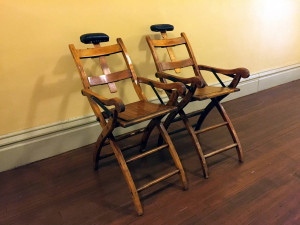
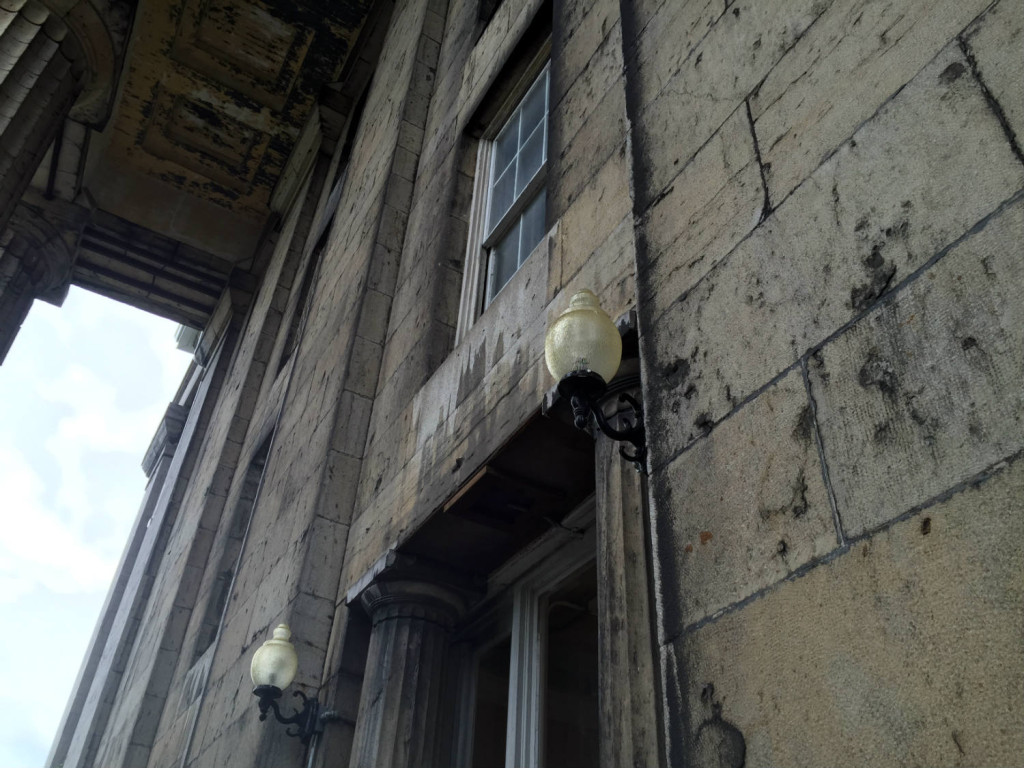
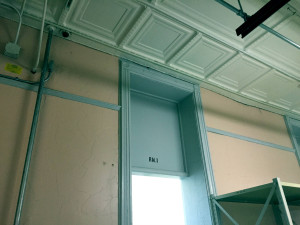

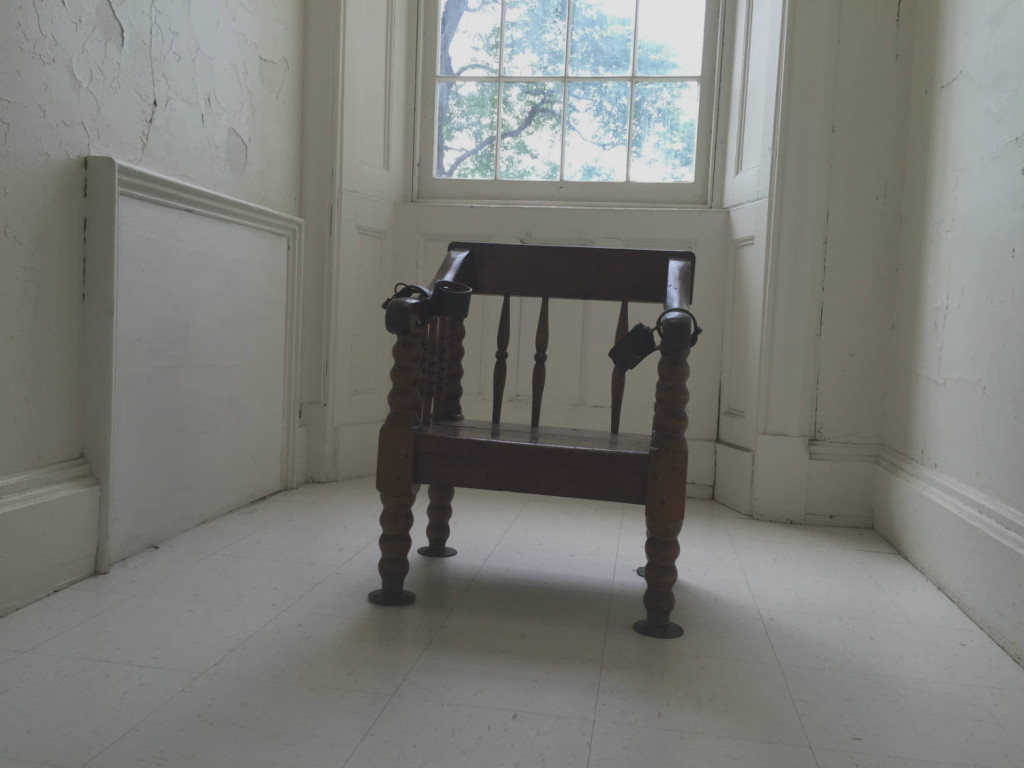
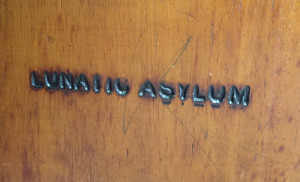







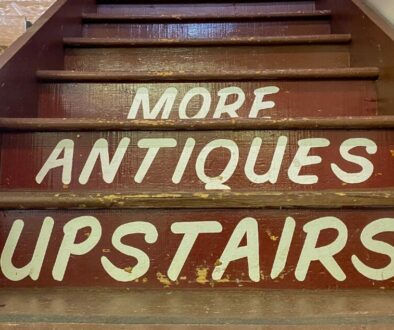


June 20, 2015 @ 12:00 pm
Thanks for this very interesting article and so many photos. I was so surprised to learn that there is still a working hospital there. I was happy to see the photo of the 2 kneelers in front of a window; it’s good that in the 19th century they acknowledged that prayer could help in healing. Thanks a lot, Chris, for expanding our knowledge of our history.
June 20, 2015 @ 2:36 pm
Really enjoyed reading this enlightening article Chris. The word ‘asylum’ has been revived in my mind as one to suggest healing, caring and respite thanks to you. Great pictures!
September 20, 2016 @ 11:04 pm
This is a somewhat over glorified view of an institution that delivered lobotomies, electric shock treatments and sexual abuse to countless of innocent disturbed patients. I was there and know first hand. This was asylum to none.
September 27, 2016 @ 2:23 am
Darlene hughs, I was there myself and it’s nothing like a picture of roses,I was there when I was 9 years old and stayed there in that place for almost two years. While their I was mistreated all the time, and was the only black and the youngest. That was in the early 70’s
January 15, 2022 @ 7:19 am
Thank you for speaking up. Many like to paint a pretty picture.
September 8, 2019 @ 12:30 pm
My grandmother was there. My daughter is researching now at University . All my grandmother’s records were destroyed. Can you share more with me? Can you contact me:
10 Tragic Cases From Turn-Of-The-Century Insane Asylums - Bee Trends
March 2, 2017 @ 5:47 am
[…] Photo credit: Exploring Upstate […]
Haunted Places in Upstate New York - Home in the Finger Lakes
October 2, 2019 @ 5:01 am
[…] “Old Main” reopened to the public in June of 2014 for annual tours of the former lunatic asylum, which has been a huge draw for history buffs and paranormal investigators. » More info […]
October 17, 2019 @ 7:22 pm
My Great Aunt Grace Earnshaw Hall died in that hospital in 1940. Her husband committed her there for many years before she eventually died. No one in our family seemed to know what it was that caused her to be incarcerated there. Is there any way to get her records. She was born in 1880. Bless you Aunt Grace.
April 9, 2020 @ 10:14 pm
Sadly, many men committed their wives to rid themselves of them due to divorce being frowned upon in those days. Unruly children as well. Probably half the people there didn’t deserve to be there. As with the Asylum in Georgia, a lot of staff came from patients themselves. It’s just such a sad sad history. In my research several years back, there were over 2000 graves there on the premises which we never located and I’m thinking like 5000 sent to 2 different cemeteries, one being about 2 hours away it’s been a minute so the numbers fail me. I think many weren’t accounted for, those with no families. What happened to them? All of the asylums only marked the graves of the patients that died with a number marker. It would interesting if their records would be made public so that families could find the information so many are searching for. What these people endured is beyond our imagniations! According to an article I read back at that time, the attic is still riddled with luggage and belongings of those committed there. If only walls could talk!
Celebrating Halloween at Asylums: What Message Do We Send? | Diversity Consciousness; Chat with Dr. Bucher, Author / Educator / Diversity Consultant
October 29, 2019 @ 5:45 pm
[…] list provided by my professor, I chose to work nearby in an institution that used to be called the New York State Lunatic Asylum at Utica, New York. Unlike other students at this site, I chose to work in the Geriatric Ward. […]
June 1, 2020 @ 4:22 pm
My great-grandmother was put in Marcy by my grandfather around 1940. She died there in 1941. She was an Italian immigrant, unable to speak or understand English, and I can only imagine the agony she had to have endured since she was not insane or psychotic but only causing problems in my grandfather’s life. I’m writing a book, memoir, in fact, and would like to know if it’s possible to access the archives.
June 1, 2020 @ 4:40 pm
Hi Carol.
You may want to try with the New York State Archives.This page has info specifically on former New York State Mental Hospitals and Special Schools. Best of luck with your research!
July 30, 2023 @ 8:12 pm
Do you know if there was ever a mental facility in Rome, NY? I have heard stories that my great-grandfather died in a facility there in around 1941, but I can find nothing on it.
November 4, 2020 @ 7:59 pm
Hi Carol,
I have a similar story and want to write about it as well. Let me know what you
have discovered.
Lori
March 24, 2022 @ 9:58 pm
If you look at the Census in New York State you will find her if she was there. My Grandfather was in Willard and he is listed there in the 40s. Good Luck!
Rolling Hills Asylum - East Bethany, NY | Exploring Upstate
July 11, 2020 @ 7:44 pm
[…] to build state-run facilities around New York. State officials began that part of history with the Utica Psychiatric Center in […]
September 20, 2020 @ 5:14 pm
Hey Chris and other interested folks,
I arrived upon Chris’ page/writing, after reading an article called “Religion, “Moral Insanity,” and Psychology in Nineteenth-Century” by Jodie Boyer. It was published in the Academic Journal: Religion and American Culture A Journal of Interpretation in 2014. I believe it is open access and here is a link if folks are interested in reading it https://booksc.org/book/28610384/7297f3.
The article covers some of the philosophical (religious, legal, moral) disagreements of that time related to caring or criminalizing the “insane” and also covers some topics related to this Utica hospital and has references to Brigham and Gray as the asylum directors and their thinking. Well that’s my take on it, there is prolly other nuggets in the article, I didn’t completely grasp.
thanks for your writing too!
Haunted Locations: Utica State Hospital, Utica, NY – Stitched Smile Publications
June 15, 2022 @ 1:03 am
[…] /https://exploringupstate.com/a-look-inside-the-former-new-york-state-lunatic-asylum-at-utica/ […]
Haunted Locations: Utica State Hospital, Utica, NY – House of Stitched: The Magazine
June 15, 2022 @ 6:06 am
[…] /https://exploringupstate.com/a-look-inside-the-former-new-york-state-lunatic-asylum-at-utica/ […]
April 11, 2023 @ 1:37 pm
My mother was committed to Utica State in the mid forties until she committed suicide on a weekend home visit in 1953. She hated returning to Utica on Sundays. I know she was restrained there. I was 7 at the time. I saw one ward, the better one when I was 11…army cot beds lined two sides of the ward…maybe 40 beds. Stark.
Her father died there in 1932. I can only imagine the terror of that place. I understood he died by suicide but no record of cause of death on the death certificates. I wonder now if he died during the old way of electric shock therapy.